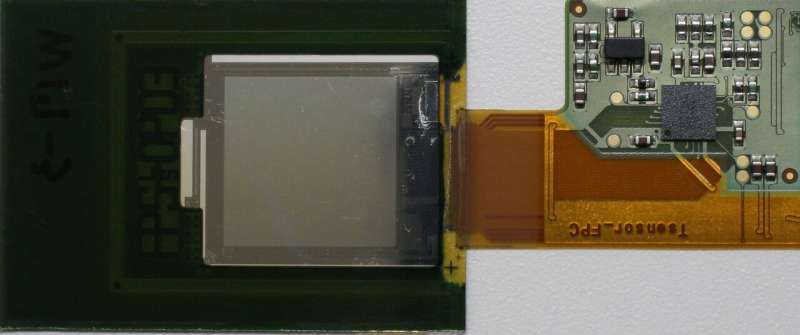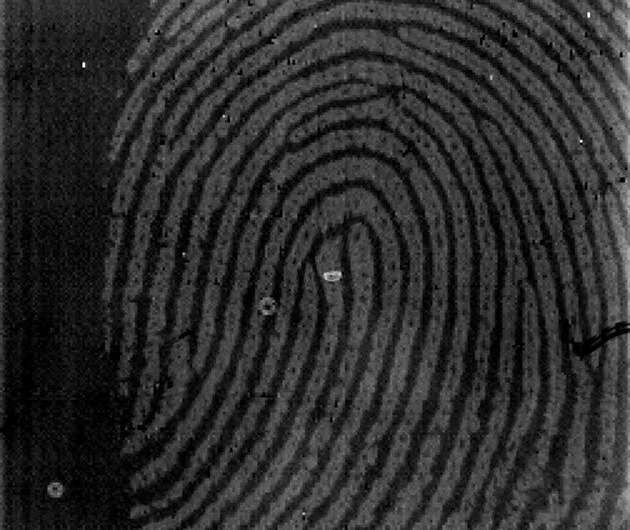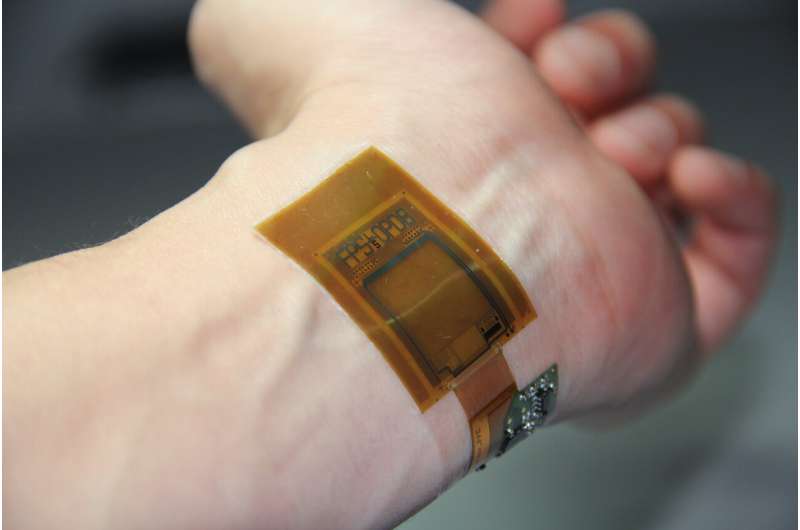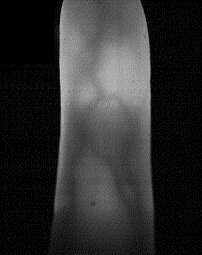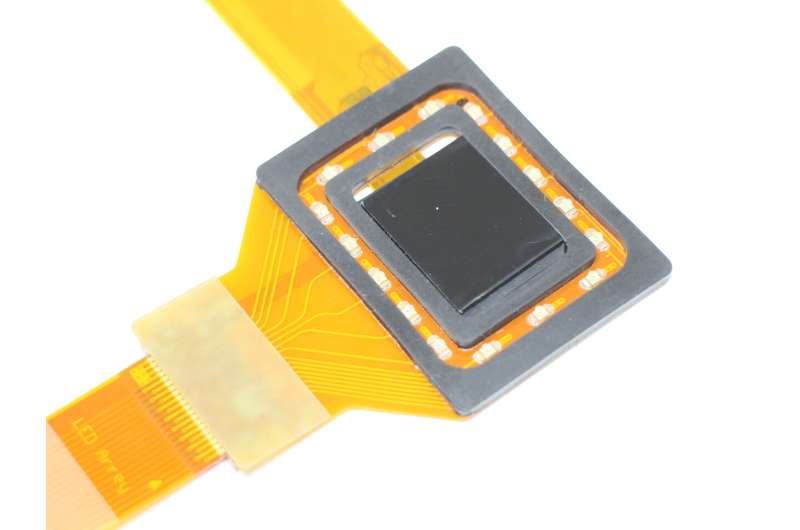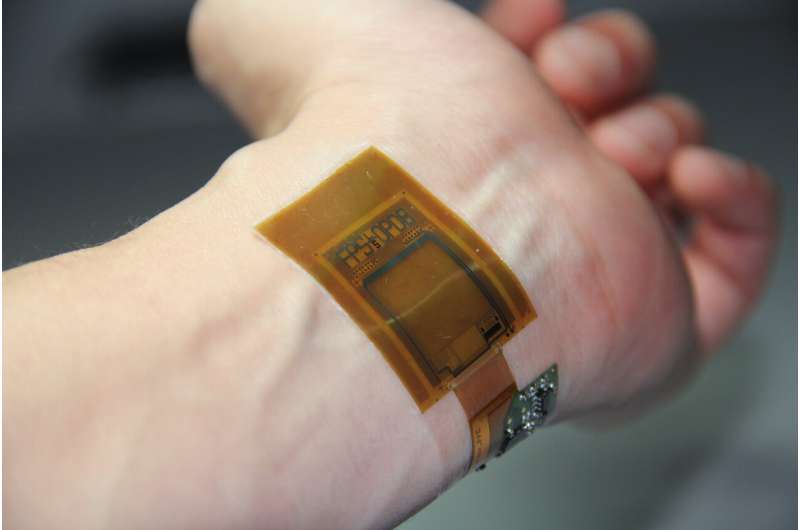Credit: Yokota et al.
Conformable imagers are flexible electronic components that can be placed in direct contact with a human user's skin, recording his/her vital signs or other biological information. Over the past few years, these imagers have become widely used, particularly for biometric authentication and in wearable electronics, such as smart watches or fitness trackers.
Building on sensors that they developed in the past, researchers at the University of Tokyo and Japan Display Inc. have recently created a new conformable imager for both biometric authentication and vital sign measurement applications. This new imager, presented in a paper published in Nature Electronics, was fabricated using a combination of low-temperature polycrystalline silicon thin-film transistor (LTPS-TFT) readout circuits and organic photodiodes.
"Our laboratory focuses on the development of flexible electronics, especially organic electronics," Tomoyuki Yokota, one of the researchers who carried out the study, told TechXplore. "In our previous work, we developed an ultra-flexible OLED and organic imaging sensor for bio-medical applications, yet its resolution and speed was not enough to take a fingerprint image. The conformable imager we presented in our paper solves this problem by integrating LTPS TFT and an organic photodetector."
Despite their recent popularity, developing flexible imagers that can attain both high definition measurements and a high speed of recording, has so far proved to be very challenging. Past research efforts have often resulted in imagers that can attain high definition recordings but are quite slow, or others that produce lower definition recordings over shorter periods of time.
Credit: Yokota et al.
The new imager developed by Yokota and his colleagues, on the other hand, can achieve readings with a high resolution of 508 pixels per inch, at a speed of 41 frames per second. This remarkable performance is directly enabled by the integration of an organic photodetector and a LTPS-TFT into a thin, sheet-type image sensor.
"Since our sheet-type image sensor is thin and bendable (its total thickness is of only 15 micrometers), it can be easily integrated into wearable devices," Yokota said. "In addition, it can be used to measure health conditions and perform biometric authentication at the same time. As a result, we expect that it could help to prevent 'spoofing' and patient information from being mixed up."
The thin and flexible image sensor developed by Yokota and his colleagues can take high-resolution images of both fingerprints and veins, which are now used for biometric identification in a variety of settings. It can also measure what is known as the 'pulse wave,' the wave of increased pressure that starts at the ventricular systole in the body and propagates from the semilunar valves over to the human arterial system, as well as its distribution.
-
Credit: Yokota et al.
-
Credit: Yokota et al.
-
Credit: Yokota et al.
-
Credit: Yokota et al.
Pulse waves are a vital sign and they are often measured in healthcare settings during patient check-ups. In addition to enabling the development of more advanced wearable electronics and tools for biometric identification, the conformable imager developed by the researchers could thus also have medical applications, allowing doctors to monitor their patients' pulse waves over time.
"We now want to integrate our device with wearable electronics such as smart watches," Yakota said. "Meanwhile, we are also exploring the application of our image sensor in the medical field."
More information: Tomoyuki Yokota et al. A conformable imager for biometric authentication and vital sign measurement, Nature Electronics (2020). DOI: 10.1038/s41928-019-0354-7
Journal information: Nature Electronics
© 2020 Science X Network
